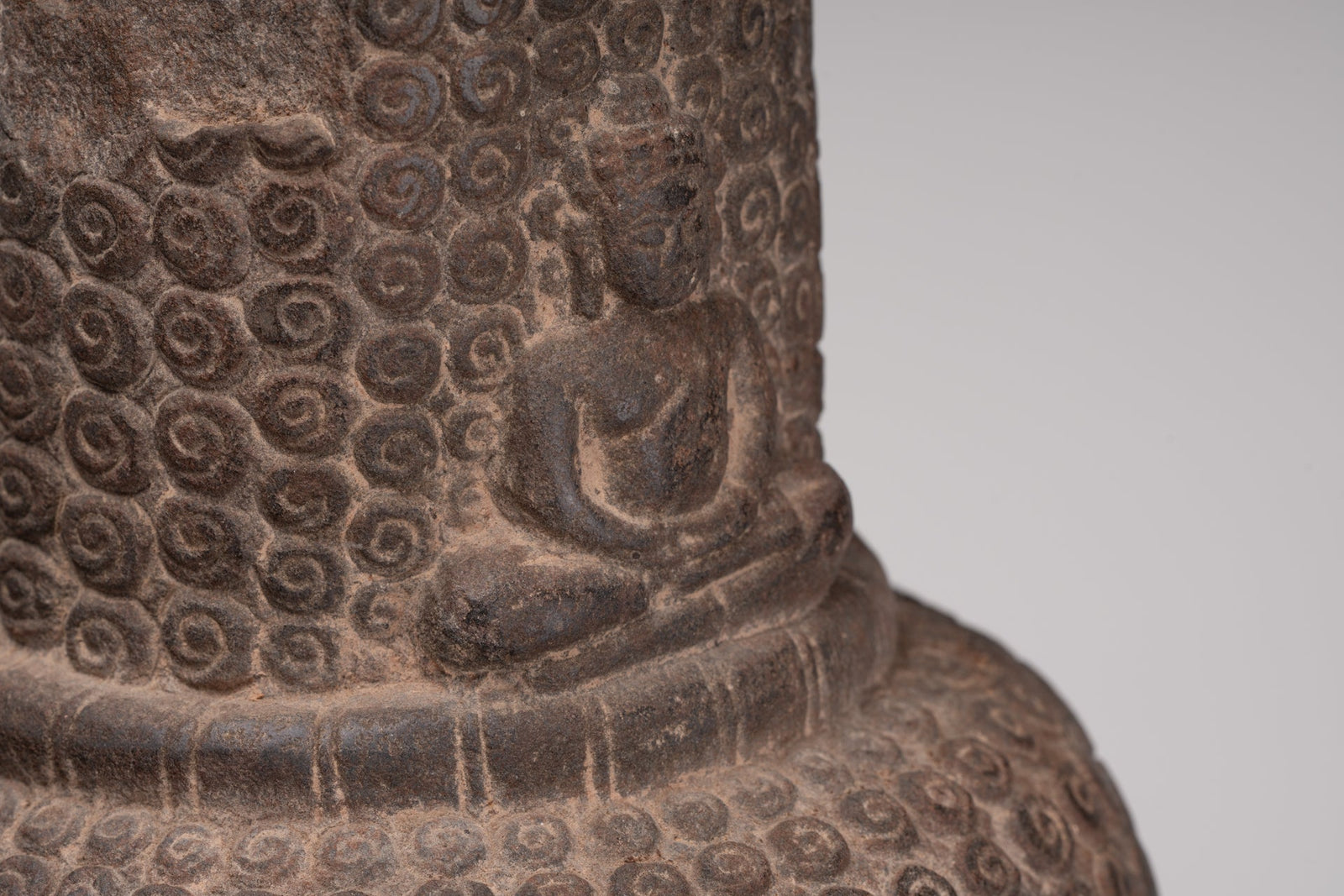
Khmer Vishnu and Lokeshvara: Kindred Spirits or Coincidental Resemblance?
The ancient Khmer Empire, centered in present-day Cambodia, was one of Southeast Asia’s most remarkable civilizations. From the 9th to the 15th centuries, it produced stunning works of religious art and architecture, blending Hindu and Buddhist symbolism in a uniquely Khmer aesthetic.
Two of the most prominent figures from this cultural pantheon are Vishnu, the Hindu god of preservation, and Lokeshvara (Avalokiteshvara), the compassionate bodhisattva of Mahayana Buddhism.
To the untrained eye, Khmer sculptures of Vishnu and Lokeshvara often appear strikingly similar. Both are serene, graceful, and adorned with royal regalia. But are they related—or is this resemblance merely artistic convention?
Let’s explore their roles, symbolism, and visual overlap to better understand the sacred synchronicity between these two revered figures.
Vishnu: The Preserver of the Universe
In Hinduism, Vishnu is the divine preserver and protector of cosmic order (dharma). He is part of the holy trinity (Trimurti), alongside Brahma (creator) and Shiva (destroyer). Vishnu descends to Earth through various avatars, such as Rama and Krishna, to restore harmony.
Khmer Depiction of Vishnu:
-
Often shown with four arms, holding a conch (shankha), discus (chakra), mace (gada), and lotus (padma)
-
Wears a tall, elaborate crown (mukuta) and royal jewelry
-
Depicted standing with a calm, symmetrical posture
-
Appears youthful, serene, and otherworldly
Angkor Wat, originally a Vishnu temple, is a prime example of Khmer devotion to this deity. Vishnu’s presence in Khmer art symbolizes stability, protection, and divine kingship.
Lokeshvara: The Bodhisattva of Compassion
Lokeshvara, known more widely as Avalokiteshvara, is one of the most beloved figures in Mahayana Buddhism. He is the embodiment of infinite compassion, vowing to liberate all beings from suffering.
In the Khmer Empire, especially under Mahayana-inclined kings like Jayavarman VII, Lokeshvara rose to prominence as a guardian deity and royal protector.
Khmer Depiction of Lokeshvara:
-
Typically shown with two or four arms (sometimes more in later Vajrayana forms)
-
Holds objects like a lotus, rosary (mala), or vase of nectar
-
Adorned with similar royal attire, including crown, earrings, and draped textiles
-
Calm, smiling expression—exuding warmth and compassion
-
Often depicted in association with Buddha figures or Tara, his female counterpart
Jayavarman VII’s famous Bayon temple is filled with serene, smiling faces believed by many scholars to represent Lokeshvara as a deified reflection of the king himself.
Why Do They Look So Similar?
1. Shared Iconographic Conventions
Khmer art followed a strong court aesthetic that emphasized idealized beauty, symmetry, and regal presence. Whether sculpting Vishnu or Lokeshvara, artists employed similar techniques: elegant poses, tranquil expressions, and divine ornamentation. This stylized visual language blurred religious boundaries and emphasized sacred authority.
2. Religious Syncretism
The Khmer Empire embraced both Hinduism and Buddhism, often simultaneously. It was common for kings to patronize multiple traditions or transition from one to another. This fluidity encouraged shared symbolism and overlapping roles.
-
Vishnu, as protector of the cosmos, and Lokeshvara, as protector of sentient beings, both serve guardian functions.
-
Both were linked to kingship, protection, and cosmic harmony.
-
In temple reliefs and statuary, they sometimes even appear side by side.
3. Spiritual Interchange
Some scholars suggest that Bodhisattvas like Lokeshvara were conceptual successors to Hindu gods in certain regions. As Buddhism gained popularity, Lokeshvara inherited the visual and symbolic attributes of deities like Vishnu.
In Vajrayana Buddhism, Lokeshvara even takes on cosmic attributes that echo Vishnu’s role in sustaining the universe.
Key Differences in Iconography
Despite their similarities, trained observers can differentiate the two by:
-
Attributes held: Vishnu’s chakra and mace are distinct; Lokeshvara is more likely to hold a lotus or mala.
-
Associations: Vishnu may be shown with Garuda or Lakshmi; Lokeshvara may appear near Buddhas or other Bodhisattvas.
-
Facial expressions: Lokeshvara often exhibits a more emotive and compassionate gaze, while Vishnu’s demeanor is stoic and serene.
Cultural and Spiritual Legacy
The Khmer Vishnu and Lokeshvara are not just similar in appearance—they represent interwoven paths of devotion, protection, and spiritual aspiration. Their presence in Khmer art reflects a society deeply invested in sacred kingship, harmony, and divine compassion.
Even today, visitors to Angkor marvel at the seamless fusion of Hindu and Buddhist art—a testament to a civilization that saw no contradiction in embracing both.
Conclusion: Two Faces of Sacred Devotion
In Khmer tradition, Vishnu and Lokeshvara are kindred spirits—not because they are the same, but because they speak to universal human longings: the desire for protection, balance, and a compassionate guide through the chaos of life.
Their similar appearance is not accidental. It is a reflection of a culture that revered both gods and bodhisattvas as part of a grand spiritual tapestry, where divine beauty and inner grace were celebrated above all.
Explore the wisdom, artistry, and harmony of the Khmer sacred world—where Vishnu and Lokeshvara still smile upon us with ancient grace.


